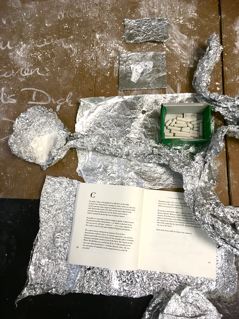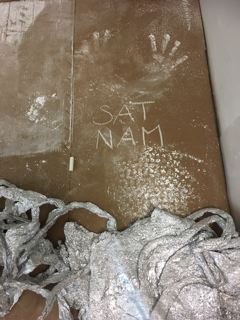Fotos von entstandenen Materialien bei stffwchsl@Soho
in Ottakring
von Sabina Holzer

C for camel. I have a hieroglyph of it right here on the table in front of me. Sometimes try standing on a busy corner in a daytime city & count how many images of animals you can see. Good to think with. Nineteenth century New York was far more polluted wih horseshit than anything else. Use the letters (each with its built in animal) & discard the mess of nature.

Invarialble we come back to the gnostic imagery: sparks of light incased & inprisoned in shells of dead matter -- or rather in abstract forms. You can scareely call the "arbitrary" -- every single alphabeth in the world is rooted in the same handful of Egyptian pictograms.
The camel is always setting out on a jouney. Even before domenstication it liked to travel. An autumn approaches you can hear distant camel bells: caravans depart for the nomandic sphere: Jonathan Chapman, Ibn Khaldum says wool & hair & fur of wild animals posses more aura than domesticates: - -beduine dialectics. Jade, silk, tea, the emergence of captitalism on the margin between settled & unsettled.


Nomadism: safty valve for civilization's discontents. Tourism
it tries to serve the same function but fails because it errodes
differnce instead of reinforcing it.
If you move much faster than a camel you don't really move, you destroy diistance.
Distance equals freedom, so freedom equals slowness. Freedom means to leave
the home, but the alphabet makes it unnecessary, and without necessity
there can exist (by contrast) no release from necessity, no freedom.
Not the idea of the camle but the camel itself, spitting & honking its way
across the desert.
Each of the letters kills the thin it has replaced.

Text: Robert Lamborn Wilson, abecedarium,
hexoxial editions, west lima, wisconsin, 2010
